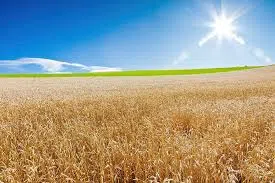The Southern Illinois Wheat Tour has once again projected a record-high weighted average yield, estimating 106 bushels per acre for the region in 2025—marking the second consecutive year of strong expectations.
Among the counties surveyed, Wayne County led the area with an impressive estimated yield of 126.52 bushels per acre, followed closely by Fayette County at 123.54 bushels per acre. Clay County recorded a more modest estimate of 84.2 bushels per acre.
The annual tour, organized by the Illinois Wheat Association, took place on May 20th and involved four teams sampling 89 fields across 22 counties. Data collection focused on tiller and spikelet counts to gauge early-season yield potential.
Jessica Rutkoski, a wheat breeder with the University of Illinois, noted encouraging field conditions even before final calculations. “Everything looked good even before crunching the numbers,” she said. “There was some lodging, but we’ve had some pretty severe weather, so that’s not really too surprising.”
Yield projections varied significantly, from 50 bushels per acre in Coles County to 154 bushels in Clark County. Fourteen counties had estimates surpassing 100 bushels per acre.
While the early estimates are promising, Rutkoski cautioned that the final outcome will depend on the grain fill period. “Last year we had head scab and some other issues that interfered with good grain filling,” she explained. “There definitely is potential for scab again, and I expect we probably will have a little bit lower yield than predicted due to the potential for reduced kernel weight.”
Bill Burgener, a Richland County Farm Bureau member who helped check fields in Effingham and Shelby counties, echoed those concerns. “I’m still a little concerned about quality, because it’s not showing up now, but head scab can bite you overnight,” he said, referencing recent and forecasted rain.
Beyond yield projections, the tour also served as an opportunity for farmers, researchers, and industry professionals to share insights and observe regional trends. Rutkoski observed a variety of row spacing practices and noted that all fields she visited had been treated with fungicide. She also noticed an increase in wheat being planted after corn, a practice that appears to be gaining traction in Illinois.
Burgener said he appreciates participating in the tour, especially in seasons when rain delays halt corn and soybean planting. “Just being out in the fields and hands on is a great benefit to me—to actually touch, feel and participate,” he said.
Larry Cooper, owner of Crop Vision Consulting LLC in West Salem, joined the tour with representatives from Siemer Milling Company. “I enjoy getting to see Siemer’s relationship with the consumers,” Cooper said. “It makes me appreciate a little more all the interaction that they do and the value that they add to wheat as a crop.”
Looking ahead, Rutkoski said the wheat crop could benefit from drier weather in the coming weeks, though cooler temperatures should support the grain fill process. She believes the crop is on track for a typical harvest timeline.
“Some say that it might be a little bit behind schedule compared to average, so that’s possible,” she noted. “A good rule of thumb is June 20th for the beginning of harvest in Southern Illinois, and I think that’s probably where it’ll be this year.”
As of May 19th, the USDA reported that wheat heading in Illinois stood at 63%, slightly behind the average pace. The condition of the crop was rated 5% poor, 35% fair, 49% good, and 11% excellent.

Comments